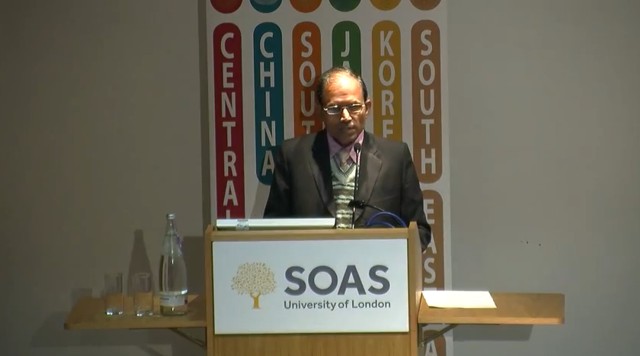 15th Jaina Studies Workshop
15th Jaina Studies Workshop
Date: 22 March 2013 Time: 9:00 AM
Finished: 22 March 2013 Time: 5:00 PM
Venue: Brunei Gallery Room: Brunei Gallery Lecture Theatre
Lecturer:

Dharmchand Jain
Abstract:
Into the panorama of Indian Epistemology and Logic Jain philosophers entered later than Naiyāyikas and Buddhists, but they have contributed a lot by developing a new definition of pramāṇa (organ of valid cognition), types of indirect pramāṇas, nature of hetu (probans) and its kinds, etc. Jaina logicians developed their epistemological doctrines on the basis of five types of knowledge found in the canonical literature. Umāsvāti or Umāsvāmin (2nd century CE) propounds two types of pramāṇa as pratyakṣa (perception) and parokṣa (indirect cognition). He kept matijñāna and śrutajñāna in the category of parokṣa pramāṇa and rest three knowledges (avadhi, manaḥparyāya and kevalajñāna) into pratyakṣa category. Siddhasena Divākara (5th century CE) or (in the view of Piotr Balcerowicz) Siddhasena Mahāmati (8th century CE) considered parokṣa pramāṇa as twofold - anumāna (inference) and āgama (testimony). Bhaṭṭa Akalaṅka (720-780 CE) developed and systematized the epistemological doctrines. He classified pratyakṣa into two types - (i) sāṃvyavahārika (sensual) and (ii) pāramārthika (transcendental), and parokṣa into five kinds - (i) smṛti (recollection) (ii) pratyabhijñāna (recognition) (iii) tarka (inductive reasoning) (iv) anumāna (inference) and (v) āgama (testimony). After Bhaṭṭa Akalaṅka Vidyānanda (775-840 CE), Anantavīrya (950-990 CE), Māṇikyanandin (993-1053 CE), Vādirāja (1025 CE), Abhayadevasūri (10th century CE), Prabhācandra (980-1065CE), Vādidevasūri (1086-1169 CE) Hemcandrasūri (1088-1173 CE), Ratnaprabhasūri (11th -12th century CE), Abhinavadharmabhūṣaṇa (14th -15th century CE), Malliṣeṇasūri (1293 CE), Guṇaratnasūri (1343-1418 CE), Vimaladāsa, Yaśovijaya (17th century CE) are the main contributors to Jain epistemological literature and tenets. They refuted the other Indian systems and established the Jain doctrines cogently. The main contributions of the Jaina logicians may be summed up in the following points:
- They established the definitive nature of pramāṇa illuminating itself and the object.
- They cogently established recollection, recognition, and inductive reasoning as independent pramāṇas.
- They are very precise in defining the hetu (probans) but they have elaborately conceived kinds and sub-kinds of it.
Video:

 Prof. Dharmchand Jain
Prof. Dharmchand Jain